The Evolution of the Airplane Seat
Airplane seats have changed a lot over the decades, but their evolution isn't just due to trends of the years.
PJ Wilcynski, Boeing’s associate technical fellow and Payloads chief architect, has witnessed the progress of cabin architecture for over two decades and dug into the Boeing historical archives to share exclusive imagesof aircraft seats past with Travel+Leisure.
%image1
The aircraft seat had a humble start as little more than a collection of wicker chairs fastened to the floor. By the late ‘20s, these wicker chairs were lined with leather and padding to make them a little bit more comfortable.
“Leather was very popular because it allowed them to wipe down the seats easily because of all of the soot from the airports and dusty runways where the aircraft would land in the early days,” said Wilcynski.
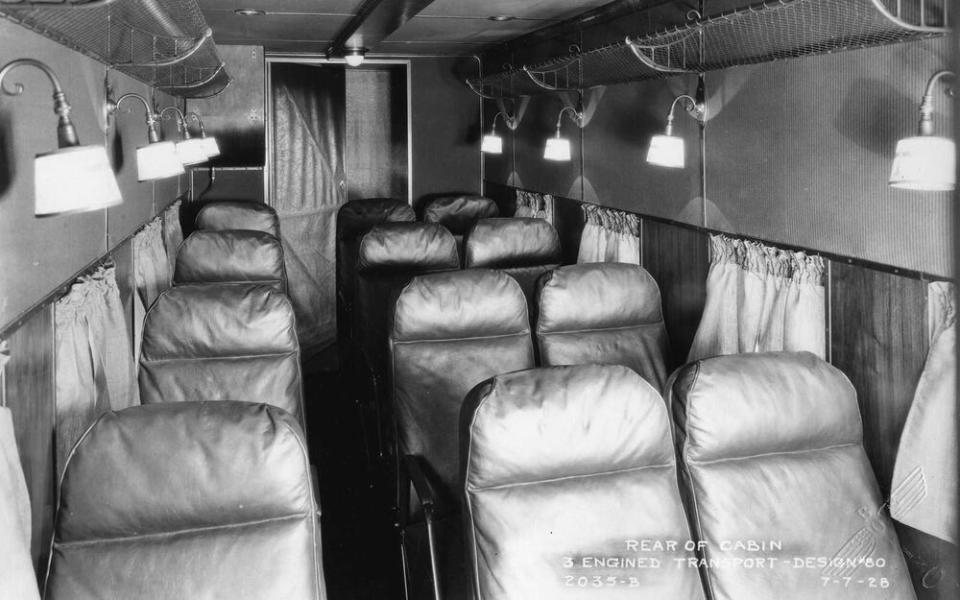
There were improvements in the late ‘30s with aluminium-tube seating, thick seatbelts made of leather, thicker padding, and velour covers.


From 1939 to the late ‘40s, the Boeing 314 Stratoliner, the flying boat 314 Clipper, the Boeing 377 Stratocruiser, and the Douglas DC-3 to DC-6 reflected the airlines’ ambitions to make flying a luxury travel experience.
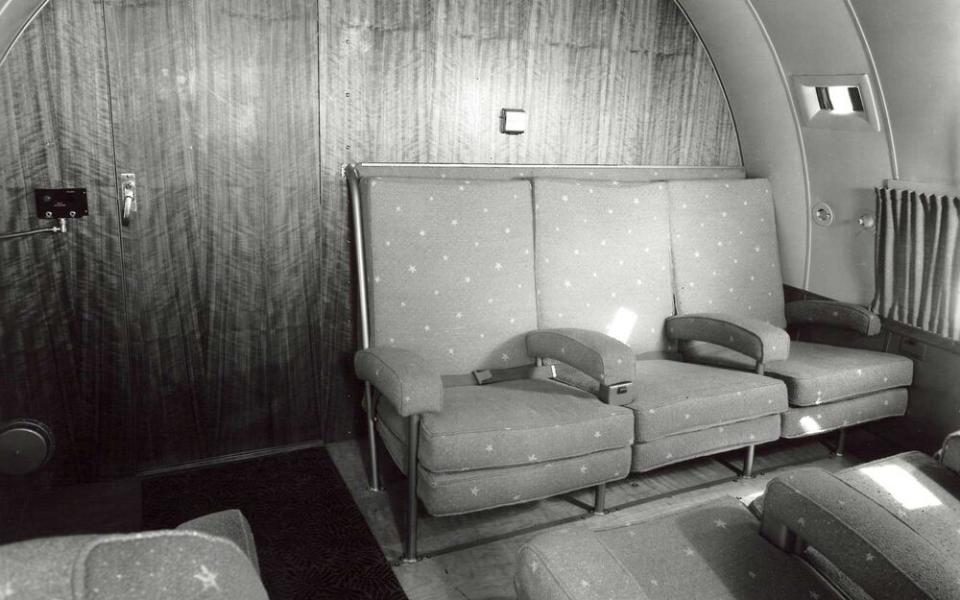
There were seats that converted to beds for sleeping on overnight flights and seatbelts got an upgrade from thick leather straps to something closer to the types of buckled fabric belts we see on planes today. More decorative details made the aircraft interior feel like a living room.
Boeing’s 377 Stratocruiser from 1949 had a spiral staircase at the back of the plane which gave passengers access to a lower deck lounge where they could stretch their legs and socialize. There were also drop-down beds overhead for sleeping.
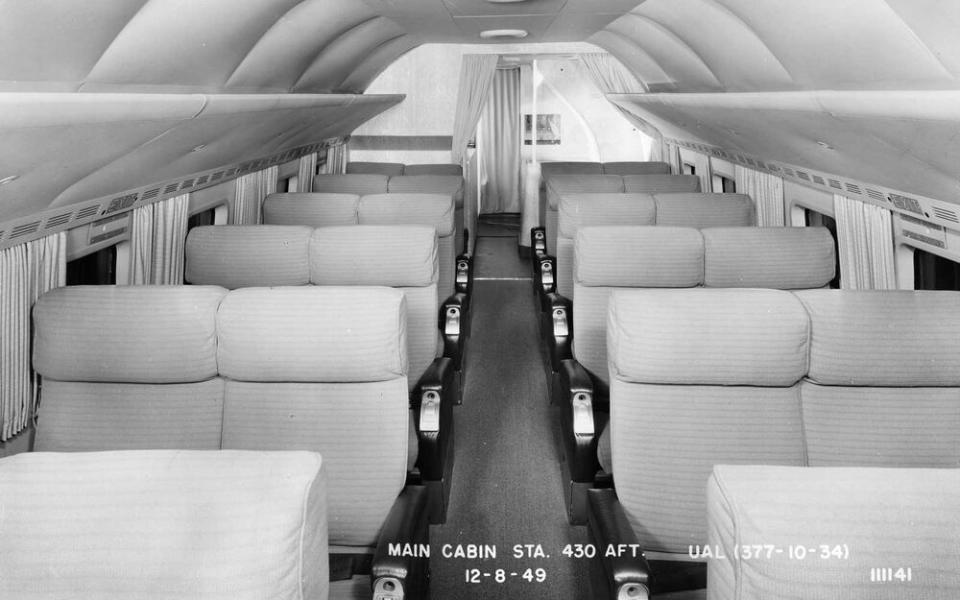
Stratocruiser seats also introduced new comfort features, and Boeing was involved in these design improvements.
“These seats were mounted on shock absorbers to minimise some of the vibration from the propellers,” said Wilcynski. “When you look at them, you don’t see a lot of development at the highest levels, but there was certainly recline and there was a footrest that deployed from the seat.”
Seats were basically designed for one class — those who could afford to fly — until the late-‘50s and early-’60s.
“The 1959 Pan Am 707 was one of the last of the airplanes that we delivered with one class of service before the introduction of tourist class,” said Wilcynski. ”What’s interesting is that even in the late ‘50s you can see that these seats didn’t have tray tables in the back. As I understand, meals were served by putting a pillow on your lap and the tray placed on the pillow.”

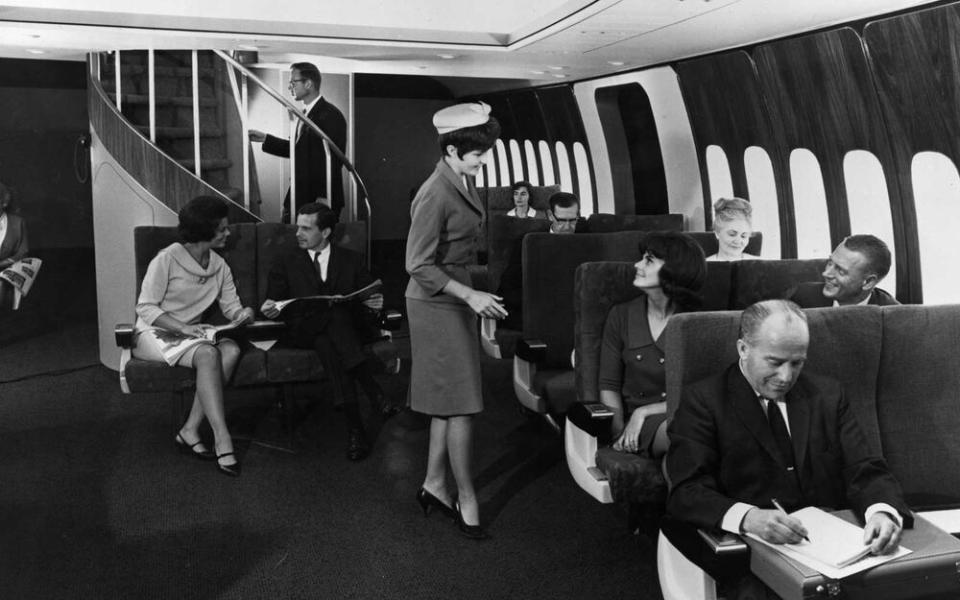

The seats on the one-class five-abreast Pan Am 707 were 19-inches wide, but not all airplane seats were as forgiving on the hips.
“Out of the development of tourist class in the late ‘50s, you saw the introduction of the six-abreast 17.2-inch wide triple seat. It [was] featured on 707, the 727, and 737,” said Wilcynski.
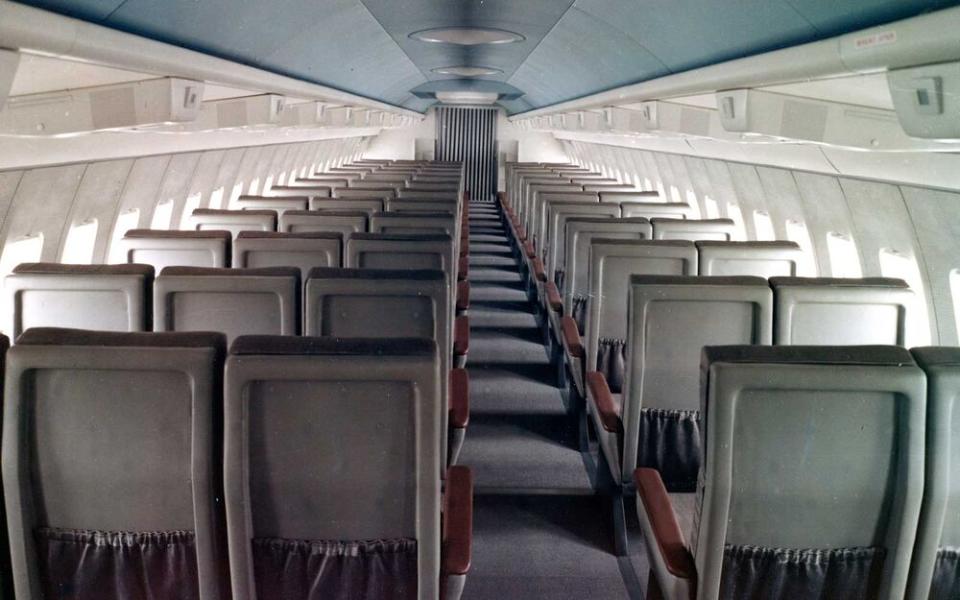
When the 747 entered service in 1970, it featured nine-abreast seats — a triple, a quad, and a double row. This meant seats were a bit wider — but that didn’t last.
“As a result of changes to the fare structure, many airlines quickly went to 10 abreast,” said Wilcynski. Legroom was tight too. “While many of the first planes were introduced with 34 or 33-inch pitch, they very quickly went into 32-inch pitch. And I have evidence of early 747-200s of premiere airlines which operated at a 31-inch pitch.”
But the 747 was definitely a trendsetter in positive ways.
“The 747 was also the first to have enclosed pivoting overhead stowage bins, which has carried on to today’s most modern models,” said Wilcynski. “It was really with the 747 that the multiplex system was introduced, with attendant call and reading light activation. It was also the system that provided the audio for the movies that you listened to, with pneumatic tubes that plugged into the armrest.”

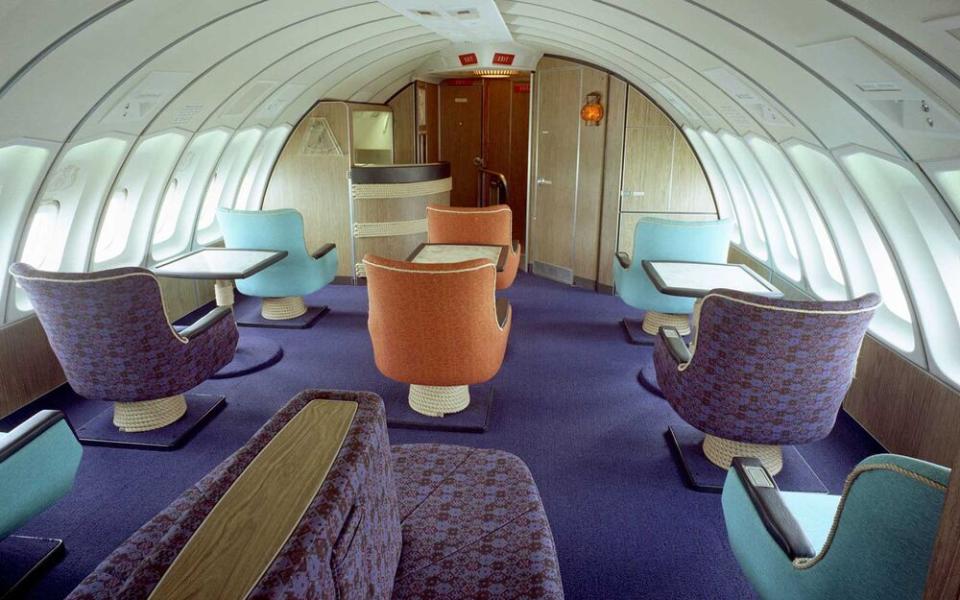
The 747 also featured an upper lounge for first class passengers.
“It was a very special place and brought us back to the lower lounge that started with the Stratocruiser,” said Wilcynski.
In the ‘80s, there were dramatic improvements that passengers couldn’t see, and which still drive the design of airline seats we fly in today.
New safety regulations required seats to withstand up to 16 Gs of force on impact (16 times the force of gravity). There were also new fire regulations, which led to the introduction of a fire-blocking layer on seat cushions and fire-retardant cabin textiles.
Today’s luxury business and first class seating options are very recent. Up to the late ‘90s, and even in the early ‘00s, most premium classes offered recliner-style seating. New composites allowed for shells around convertible seats to create beds and private suites.
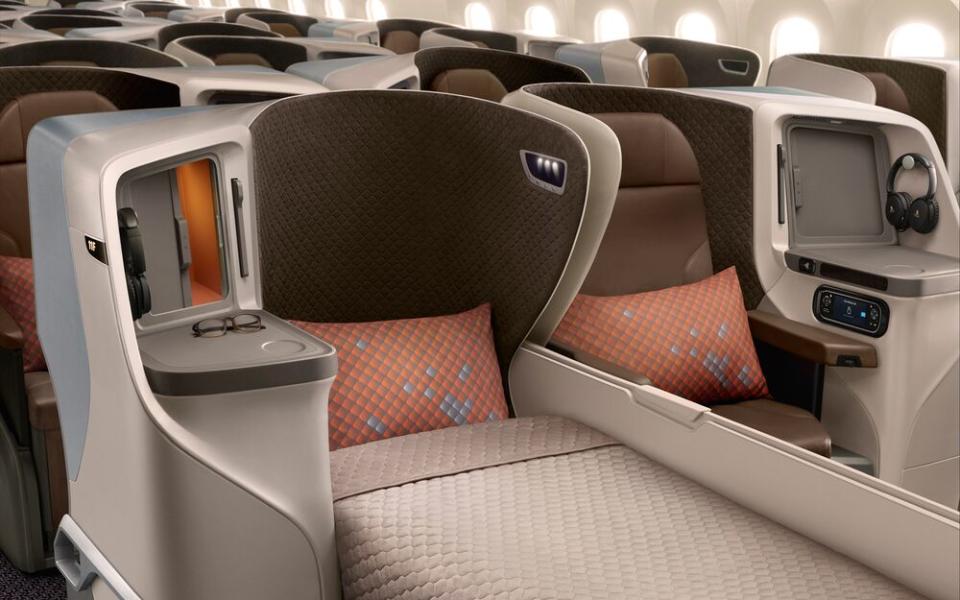
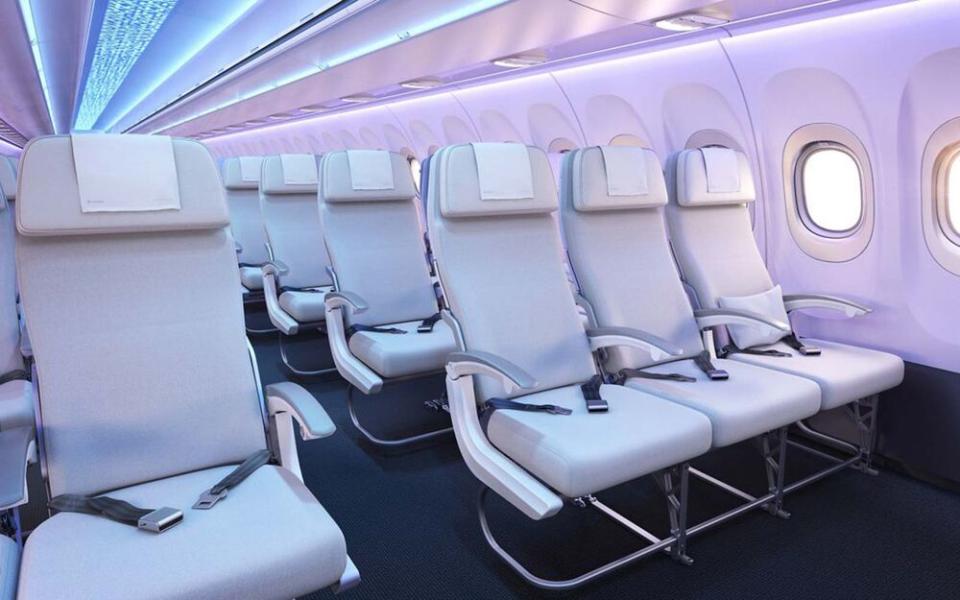
In economy class, the last decade has seen new in-flight entertainment systems that are mounted to seat backs, power outlets, tray tables which can fit our electronic devices, and much more.
Designers are still working on improvements and Boeing has started production on the next generation of flight — the 777X which promises a new era of flying.
While the seating details are still tightly under wraps, we’re sure they won’t be made of wicker.

